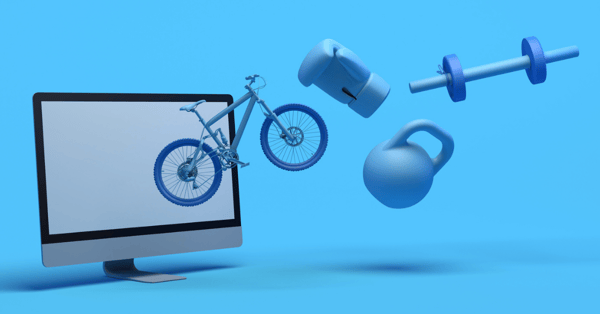'I want to lose my Digital Weight'
All of us like to express our thoughts and experiences in the form of blogs, presentations, files, photos, emails and posts on professional as well as social platforms. We also like to create a memory of such occasions and save them for future reference. But when we need to, we create new artefacts in-line with our reflection at the given point and of course, save it again for future reference!

In the last 4 or 5 years, I've noticed that digital is the way and data is the golden key. We create digital footprints with every click on social media, digital magazine subscriptions, job search or just online shopping. Every service provider collects these data crumbs and to monetise, bombards us with marketing emails. All these emails with backgrounds and product images provide information to attract consumers but if not managed, it piles up in the cloud storage.
Most of us are guilty of such digital hoarding! Every day, we create 2.5 quintillion bytes of data! When this data is not supervised and organised, it creates digital waste.
Drawbacks of Digital Weight
We choose to store the data in cloud locations because they are globally accessible, secure and currently free. To host this virtual space, vast datacentres employ high-capacity infrastructure that results in a carbon footprint of about 0.2 tons of CO2 per 100 gigabytes data storage. This certainly accelerates global warming.
The second drawback is the risk of not being able to use the data efficiently. There could be multiple versions, repetition or duplication of same artefacts. In a time of need, we may not be able to apply the correct filters to retrieve the relevant data from the storage pile.
Lastly, and the most important drawback I could think of is the security risk of sensitive information getting lost in this accumulated digital weight.
How do I lose it?
Losing digital weight is not much different than losing body fat. We can combine the concepts of weight management with 3Rs of effective waste management to achieve optimised data profile.
Restrict
This first 'R' will focus on reducing junk intake and reduce the digital waste:
- Instead of storing multiple versions of a document, we can use office tools or version control tools while storing the document.
- On every website, due to data storage regulations; the consumers are asked for their data storage and usage preferences. If we manage the cookie settings to minimum required, we can reduce the data crumbs we may create on the internet.
- On most of the websites where we create a user profile, we are asked to provide our marketing preferences. When opted out, we can save a lot of email space by avoiding the marketing emails.
- If we can analyse our usage of periodic digital newsletters and unsubscribe the lesser used ones, we will be able to keep the email storage leaner.
Restructure
Restructuring our data is like exercising regularly. We can regularly revisit the stored data and organise it. We can restructure our data by tagging. This will help us in grouping the data based on locations, tasks, key events, etc; making the data more accessible.
All the storage providers offer recommendations and suggestions based on algorithms that use size, duplication, usage frequency, etc. Leveraging them to remove duplicate instances of data will reduce the storage. The user can also set rules in their mailboxes to organise the emails in folders and set visiting frequency to clean the unwanted emails.
Rethink
This 'R' can be associated with lifestyle change decisions, where we analyse our current choices and look for more sustainable alternatives. We must assess our data access patterns and requirements to choose alternative storage solutions:
- Local HDD – If the information usage pattern is frequent and by a single user from an identified device, it's advised to use HDD over cloud storage. Storing a file on local HDD is more environmental friendly than storing it in the cloud.
- Cloud alternatives – If the usage pattern is intermittent and through multiple locations, cloud storage providers offer cost-effective & energy efficient storage solutions. For example, Google offers 'cold storage' (6p per month for 100GB) or 'Nearline' (13p per month for 100GB). These options retrieve the data only on request and result in comparatively green storage solutions.
If consumers change their storage pattern, the service providers will be driven to offer ‘greener’ cloud solutions. I intend to follow these 3Rs and achieve leaner & greener data profile; how about you?








.png)
